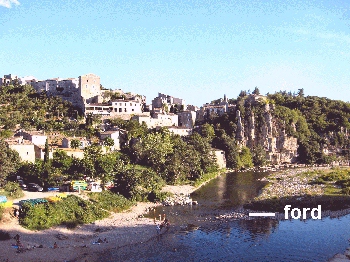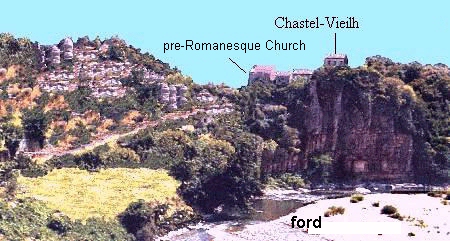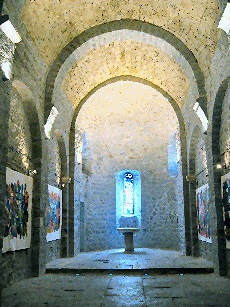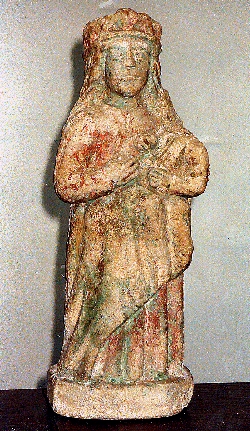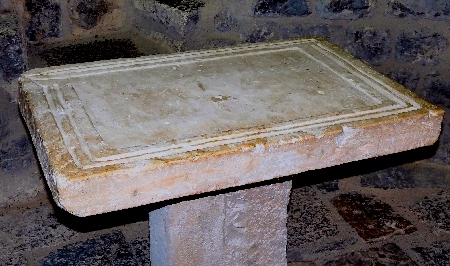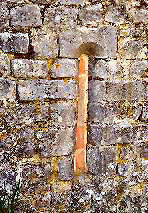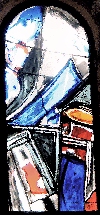Pons
de Balazuc
He is the most celebrated personage of Balazuc. He took part in the First Crusade,
and with a proven‡al chaplain, wrote its history (Historia Francorum qui
ceperunt Jerusalem) which is one of the best eye-witness accounts of the
expedition.
But he did not finish it as he was killed in 1099, a few days before the fall
of Jerusalem.
Some
buildings on the headland with the Chastel-Vielh and a primitive church.
The
lords of Balazuc controled an important and permanent ford set on the rocky
layer bed of the river.
This nave was built in the 11th century.
The
Romanesque Church
in the 11th and 13th centuries
The
second nave was built the first, in the 13th century and vaulted in the 17th
century
Madona
in painted limestone carved in the 15th century
THE
LORDS OF BALAZUC
The
Church has some magnifiscent Stained glass from Jacques Yankel
Balazuc before
the 10th century
The Altar Stone discovered beneath the abside
of the old church is a witness of an early christian church, built before
the 11th century.
An Old Chapel
This very old building has been turned into a garage. It has remnant of vault
and window, high and narrow. It is a pre-romanesque chapel.
Starting from the 11th century texts allow us
to follow the history and events in the lives of this great family. Their
influence was widespread and they were "Suzerains"
of numerous lords in the Vivarais, which shows their importance.
Guillaume de Balazuc
He was a well-known troubadour at the end of the 12th century and shone at the
court of the Count de Toulouse. He was perhaps a great-grand-son of Pons.
Seal
marked : WI DE BALADUNO, the name of the lord Wilhelm de Balazuc, in the 13th
century
Before
the year 1000, there therefore existed a village around the headland called
"La Roquette" which dominates the river Ardèche. Le Chastel-Vieilh
or Castel-Vieilh
The romanesque church, with a single
semicircular vaulted nave with an original bell-tower
of provençal type, was built during the 11th century and was known
as Sainte Marie-Madeleine's. In the 13th century a second nave was added,
built on to the north side and vaulted in the 17th century.
